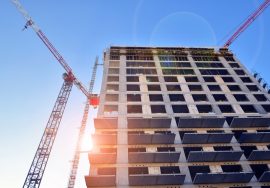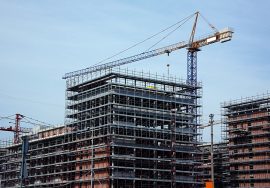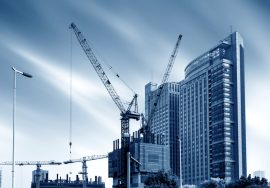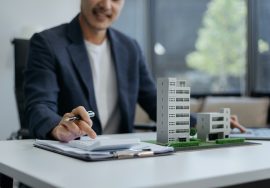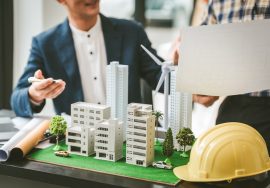
Building Performance: Enhancing Efficiency and Comfort
Building Performance: Enhancing Efficiency and Comfort
As cities grow and sustainability becomes a global priority, the concept of building performance has taken center stage in modern architecture and construction. It’s no longer enough for buildings to look good — they must also perform well.
Building performance measures how effectively a structure functions in terms of energy efficiency, occupant comfort, environmental impact, and long-term sustainability. In short, it’s about creating buildings that are not only beautiful but also smart, durable, and eco-friendly.
What Is Building Performance?
Building performance refers to how efficiently a building uses energy, water, and materials while maintaining comfort, health, and safety for occupants. It involves assessing several aspects such as thermal comfort, air quality, lighting, acoustics, and structural integrity.
A high-performing building consumes minimal resources, operates cost-effectively, and minimizes its environmental footprint. This holistic approach ensures that structures contribute positively to both people and the planet.
Key Factors Influencing Building Performance
To enhance building performance, architects and engineers evaluate various parameters that determine how well a building operates:
1. Energy Efficiency
Reducing energy consumption through efficient HVAC systems, thermal insulation, and smart controls is central to building performance. Energy-efficient designs lower operational costs and carbon emissions.
2. Indoor Air Quality
Proper ventilation and the use of eco-friendly materials improve indoor environments, reducing pollutants and ensuring occupant health.
3. Thermal Comfort
Well-designed passive design strategies and natural ventilation maintain indoor temperature balance, enhancing comfort without relying heavily on mechanical systems.
4. Water Efficiency
Systems like rainwater harvesting and greywater recycling improve water management and reduce dependency on municipal supply.
5. Building Envelope Performance
The façade, insulation, windows, and roofs play a crucial role in regulating heat gain and loss, directly affecting building performance.
Why Building Performance Matters
Investing in building performance benefits not just owners and occupants but also the environment. Here’s why it’s so important:
-
Lower Operational Costs: Efficient systems save energy and reduce utility bills.
-
Environmental Protection: Optimized resource use minimizes carbon emissions and waste.
-
Occupant Well-Being: Better air quality, lighting, and comfort enhance productivity and health.
-
Durability and Value: High-performance buildings last longer and maintain higher property values.
-
Regulatory Compliance: Green certification programs such as LEED certification reward superior building performance.
Measuring Building Performance
To assess building performance, several techniques and tools are used throughout the design and operational stages:
1. Building Information Modeling (BIM)
BIM helps simulate a structure’s real-world performance before construction, identifying design flaws early.
2. Energy Modeling
Software-based simulations calculate energy consumption, thermal behavior, and potential savings.
3. Post-Occupancy Evaluation
This assesses how well a building performs after use, gathering feedback from occupants to improve future designs.
4. Life Cycle Assessment (LCA)
An LCA measures environmental impact from construction to demolition, ensuring sustainability across the building’s lifespan.
Improving Building Performance Through Design
A proactive approach during the design phase is crucial for enhancing building performance. Here’s how:
-
Integrate Passive Design: Utilize natural light, shading, and natural ventilation to reduce energy load.
-
Optimize Materials: Use green materials with low embodied carbon and high durability.
-
Use Smart Systems: Integrate smart building technology to monitor energy use and optimize performance.
-
Enhance Thermal Insulation: Prevent energy loss through walls, roofs, and windows.
-
Incorporate Renewable Energy: Systems like solar panels can make buildings more self-sufficient and sustainable.
Building Performance in India
India’s construction sector is rapidly adopting green and high-performance building standards. Urban areas face challenges like rising energy demand, air pollution, and resource scarcity — making building performance a top priority.
Organizations like the Indian Green Building Council (IGBC) and Bureau of Energy Efficiency (BEE) are promoting energy-efficient and climate-responsive construction practices across the country.
Builders and architects are increasingly using LEED certification, passive design, and renewable energy systems to boost building and achieve sustainability goals.

Partner with Experts in Building Performance
To achieve top-level building , every project requires careful design, technology integration, and continuous monitoring.
At AMS India, we specialize in optimizing building through innovative engineering, sustainable materials, and smart solutions that balance efficiency with comfort. Whether it’s a new construction or retrofit project, our team ensures your building meets global sustainability standards.
The Future of Building Performance
The future of building lies in intelligent, adaptable, and data-driven design. As climate challenges intensify, performance-based construction will define the next generation of green buildings.
By focusing on efficiency, comfort, and environmental responsibility, we can create buildings that not only perform exceptionally but also support a sustainable future.
Conclusion
Building is more than just a technical metric — it’s a vision for smarter, healthier, and more resilient buildings. From reducing carbon footprints to enhancing occupant well-being, it plays a vital role in the sustainability journey.
Investing in building today means creating spaces that work better for people, the planet, and generations to come.
Read more related articles to enhance your knowledge and make informed decisions
Cost-Effective Modular Construction: Fast, and Sustainable Building Solutions
Smart Modular Buildings: Innovative, Efficient, and Sustainable Construction

